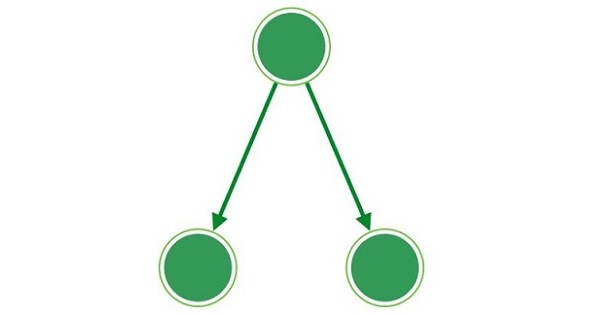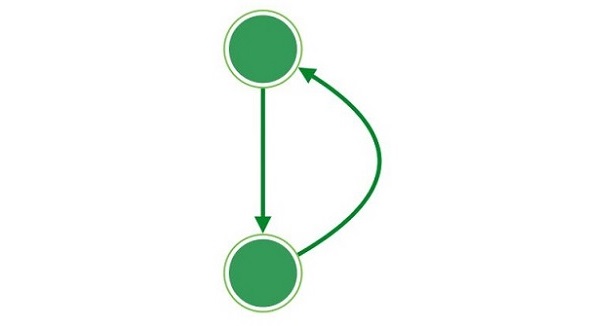
- Python Basics
- Python - Home
- Python - Overview
- Python - History
- Python - Features
- Python vs C++
- Python - Hello World Program
- Python - Application Areas
- Python - Interpreter
- Python - Environment Setup
- Python - Virtual Environment
- Python - Basic Syntax
- Python - Variables
- Python - Data Types
- Python - Type Casting
- Python - Unicode System
- Python - Literals
- Python - Operators
- Python - Arithmetic Operators
- Python - Comparison Operators
- Python - Assignment Operators
- Python - Logical Operators
- Python - Bitwise Operators
- Python - Membership Operators
- Python - Identity Operators
- Python - Operator Precedence
- Python - Comments
- Python - User Input
- Python - Numbers
- Python - Booleans
- Python Control Statements
- Python - Control Flow
- Python - Decision Making
- Python - If Statement
- Python - If else
- Python - Nested If
- Python - Match-Case Statement
- Python - Loops
- Python - for Loops
- Python - for-else Loops
- Python - While Loops
- Python - break Statement
- Python - continue Statement
- Python - pass Statement
- Python - Nested Loops
- Python Functions & Modules
- Python - Functions
- Python - Default Arguments
- Python - Keyword Arguments
- Python - Keyword-Only Arguments
- Python - Positional Arguments
- Python - Positional-Only Arguments
- Python - Arbitrary Arguments
- Python - Variables Scope
- Python - Function Annotations
- Python - Modules
- Python - Built in Functions
- Python Strings
- Python - Strings
- Python - Slicing Strings
- Python - Modify Strings
- Python - String Concatenation
- Python - String Formatting
- Python - Escape Characters
- Python - String Methods
- Python - String Exercises
- Python Lists
- Python - Lists
- Python - Access List Items
- Python - Change List Items
- Python - Add List Items
- Python - Remove List Items
- Python - Loop Lists
- Python - List Comprehension
- Python - Sort Lists
- Python - Copy Lists
- Python - Join Lists
- Python - List Methods
- Python - List Exercises
- Python Tuples
- Python - Tuples
- Python - Access Tuple Items
- Python - Update Tuples
- Python - Unpack Tuples
- Python - Loop Tuples
- Python - Join Tuples
- Python - Tuple Methods
- Python - Tuple Exercises
- Python Sets
- Python - Sets
- Python - Access Set Items
- Python - Add Set Items
- Python - Remove Set Items
- Python - Loop Sets
- Python - Join Sets
- Python - Copy Sets
- Python - Set Operators
- Python - Set Methods
- Python - Set Exercises
- Python Dictionaries
- Python - Dictionaries
- Python - Access Dictionary Items
- Python - Change Dictionary Items
- Python - Add Dictionary Items
- Python - Remove Dictionary Items
- Python - Dictionary View Objects
- Python - Loop Dictionaries
- Python - Copy Dictionaries
- Python - Nested Dictionaries
- Python - Dictionary Methods
- Python - Dictionary Exercises
- Python Arrays
- Python - Arrays
- Python - Access Array Items
- Python - Add Array Items
- Python - Remove Array Items
- Python - Loop Arrays
- Python - Copy Arrays
- Python - Reverse Arrays
- Python - Sort Arrays
- Python - Join Arrays
- Python - Array Methods
- Python - Array Exercises
- Python File Handling
- Python - File Handling
- Python - Write to File
- Python - Read Files
- Python - Renaming and Deleting Files
- Python - Directories
- Python - File Methods
- Python - OS File/Directory Methods
- Object Oriented Programming
- Python - OOPs Concepts
- Python - Object & Classes
- Python - Class Attributes
- Python - Class Methods
- Python - Static Methods
- Python - Constructors
- Python - Access Modifiers
- Python - Inheritance
- Python - Polymorphism
- Python - Method Overriding
- Python - Method Overloading
- Python - Dynamic Binding
- Python - Dynamic Typing
- Python - Abstraction
- Python - Encapsulation
- Python - Interfaces
- Python - Packages
- Python - Inner Classes
- Python - Anonymous Class and Objects
- Python - Singleton Class
- Python - Wrapper Classes
- Python - Enums
- Python - Reflection
- Python Errors & Exceptions
- Python - Syntax Errors
- Python - Exceptions
- Python - try-except Block
- Python - try-finally Block
- Python - Raising Exceptions
- Python - Exception Chaining
- Python - Nested try Block
- Python - User-defined Exception
- Python - Logging
- Python - Assertions
- Python - Built-in Exceptions
- Python Multithreading
- Python - Multithreading
- Python - Thread Life Cycle
- Python - Creating a Thread
- Python - Starting a Thread
- Python - Joining Threads
- Python - Naming Thread
- Python - Thread Scheduling
- Python - Thread Pools
- Python - Main Thread
- Python - Thread Priority
- Python - Daemon Threads
- Python - Synchronizing Threads
- Python Synchronization
- Python - Inter-thread Communication
- Python - Thread Deadlock
- Python - Interrupting a Thread
- Python Networking
- Python - Networking
- Python - Socket Programming
- Python - URL Processing
- Python - Generics
- Python Libraries
- NumPy Tutorial
- Pandas Tutorial
- SciPy Tutorial
- Matplotlib Tutorial
- Django Tutorial
- OpenCV Tutorial
- Python Miscellenous
- Python - Date & Time
- Python - Maths
- Python - Iterators
- Python - Generators
- Python - Closures
- Python - Decorators
- Python - Recursion
- Python - Reg Expressions
- Python - PIP
- Python - Database Access
- Python - Weak References
- Python - Serialization
- Python - Templating
- Python - Output Formatting
- Python - Performance Measurement
- Python - Data Compression
- Python - CGI Programming
- Python - XML Processing
- Python - GUI Programming
- Python - Command-Line Arguments
- Python - Docstrings
- Python - JSON
- Python - Sending Email
- Python - Further Extensions
- Python - Tools/Utilities
- Python - GUIs
- Python Useful Resources
- Python Compiler
- NumPy Compiler
- Matplotlib Compiler
- SciPy Compiler
- Python - Programming Examples
- Python - Quick Guide
- Python - Useful Resources
- Python - Discussion
Python - Control Flow
Python program control flow is regulated by various types of conditional statements, loops, and function calls. By default, the instructions in a computer program are executed in a sequential manner, from top to bottom, or from start to end. However, such sequentially executing programs can perform only simplistic tasks. We would like the program to have a decision-making ability, so that it performs different steps depending on different conditions.
Most programming languages including Python provide functionality to control the flow of execution of instructions. Normally, there are two type of control flow statements in any programming language and Python also supports them.
Decision Making Statements
Decision making statements are used in the Python programs to make them able to decide which of the alternative group of instructions to be executed, depending on value of a certain Boolean expression.
The following diagram illustrates how decision-making statements work −

The if Statements
Python provides if..elif..else control statements as a part of decision marking. Following is a simple example which makes use of if..elif..else. You can try to run this program using different marks and verify the result.
marks = 80 result = "" if marks < 30: result = "Failed" elif marks > 75: result = "Passed with distinction" else: result = "Passed" print(result)
This will produce following result:
Passed with distinction
The match Statement
Python supports Match-Case statement, which can also be used as a part of decision making. Following is a simple example which makes use of match statement.
def checkVowel(n):
match n:
case 'a': return "Vowel alphabet"
case 'e': return "Vowel alphabet"
case 'i': return "Vowel alphabet"
case 'o': return "Vowel alphabet"
case 'u': return "Vowel alphabet"
case _: return "Simple alphabet"
print (checkVowel('a'))
print (checkVowel('m'))
print (checkVowel('o'))
This will produce following result:
Vowel alphabet Simple alphabet Vowel alphabet
Loops or Iteration Statements
Most of the processes require a group of instructions to be repeatedly executed. In programming terminology, it is called a loop. Instead of the next step, if the flow is redirected towards any earlier step, it constitutes a loop.
The following diagram illustrates how the looping works −

If the control goes back unconditionally, it forms an infinite loop which is not desired as the rest of the code would never get executed.
In a conditional loop, the repeated iteration of block of statements goes on till a certain condition is met. Python supports a number of loops like for loop, while loop which we will study in next chapters.
The for Loop
The for loop iterates over the items of any sequence, such as a list, tuple or a string.
Following is an example which makes use of For Loop to iterate through an array in Python:
words = ["one", "two", "three"] for x in words: print(x)
This will produce following result:
one two three
The while Loop
The while loop repeatedly executes a target statement as long as a given boolean expression is true.
Following is an example which makes use of While Loop to print first 5 numbers in Python:
i = 1 while i < 6: print(i) i += 1
This will produce following result:
1 2 3 4 5
Jump Statements
The jump statements are used to jump on a specific statement by breaking the current flow of the program. In Python, there are two jump statements break and continue.
The break Statement
It terminates the current loop and resumes execution at the next statement.
The following example demonstrates the use of break statement -
x = 0
while x < 10:
print("x:", x)
if x == 5:
print("Breaking...")
break
x += 1
print("End")
This will produce following result:
x: 0 x: 1 x: 2 x: 3 x: 4 x: 5 Breaking... End
The continue Statement
It skips the execution of the program block and returns the control to the beginning of the current loop to start the next iteration.
The following example demonstrates the use of continue statement -
for letter in "Python":
# continue when letter is 'h'
if letter == "h":
continue
print("Current Letter :", letter)
This will produce following result:
Current Letter : P Current Letter : y Current Letter : t Current Letter : o Current Letter : n